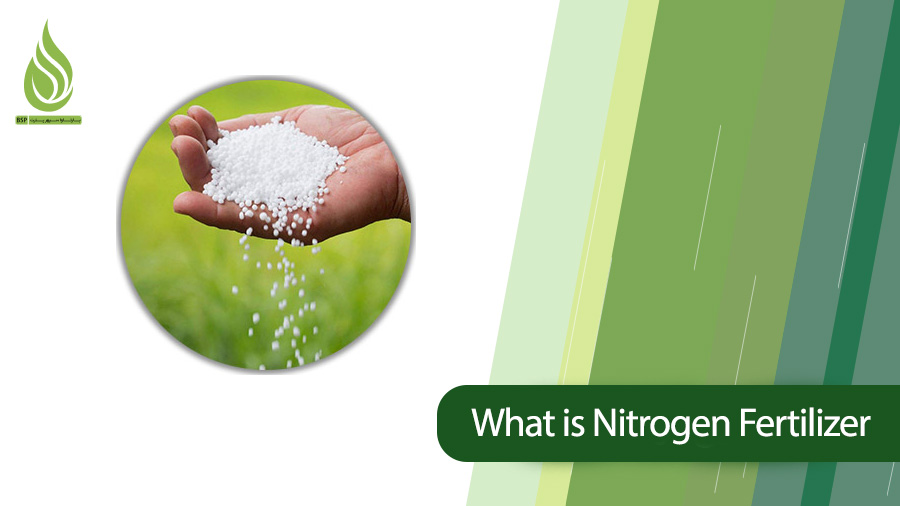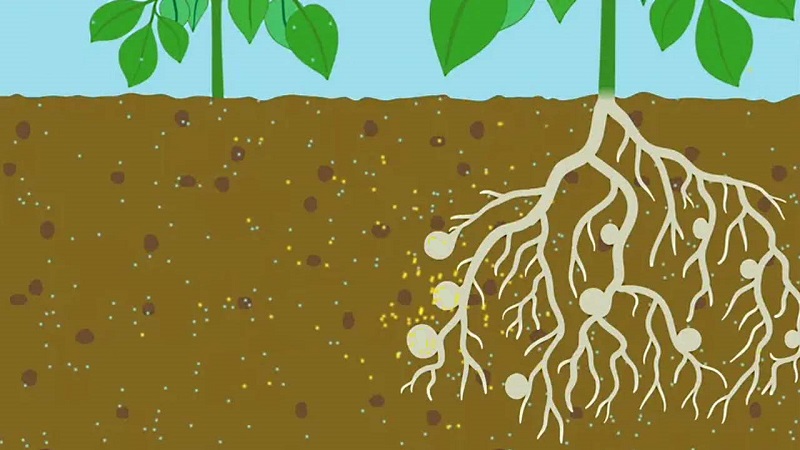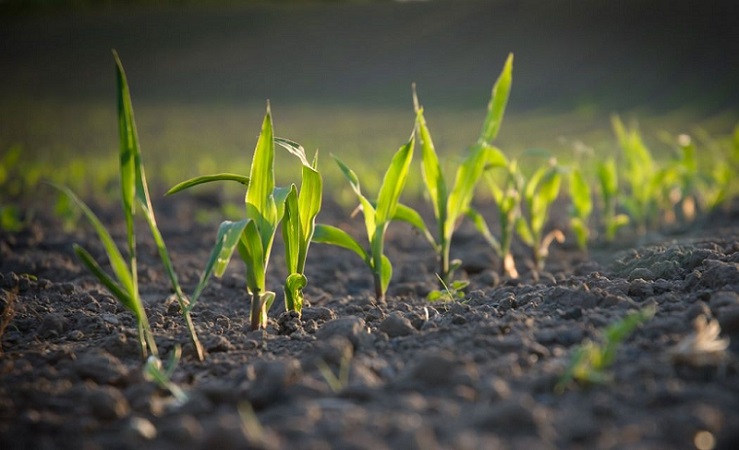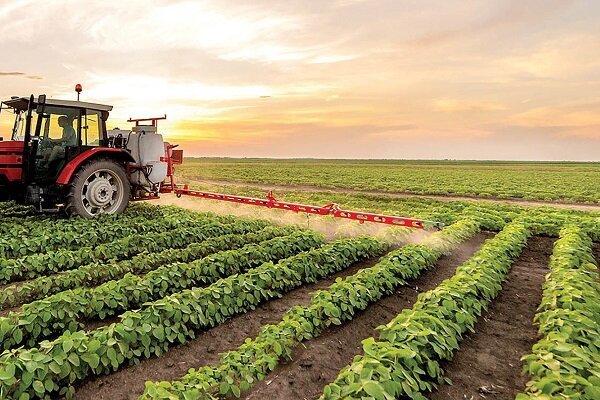
What Is Nitrogen Fertilizer? What Are the Types of Nitrogen Fertilizers?
Nitrogen fertilizer (fertilizer containing nitrogen) can be mentioned among the fertilizers used to strengthen plants and trees. Nitrogen is one of the most important elements used by plants. Nitrogen fertilizers help increase soil nitrogen and plant growth.
However, excessive use of nitrogen fertilizers can cause the loss of plants and damage to the soil and nature.
In this article, we introduce the types of nitrogen fertilizers and check the time it takes to fertilize plants using them.
What is nitrogen fertilizer?
Nitrogen is one of the most important elements needed by plants. Its presence is necessary for plant growth and increases the quality of agricultural products. However, for various reasons, the amount of nitrogen in the soil decreases, and plants cannot get enough nitrogen from the soil.
Therefore, nitrogen-containing fertilizers should supply the plant’s nitrogen needs. The most common nitrogenous fertilizers are ammonium sulfate, calcium nitrate, urea, etc.
In general, nitrogen fertilizers can be divided into organic and inorganic categories. Organic nitrogen fertilizer is obtained from natural sources such as animal manure, compost, and plant residues. Inorganic nitrogen fertilizers are produced artificially and are based on ammonium, nitrate, and amides.
What role does nitrogen play in plant growth?

Plants need phosphorus, potassium, and nitrogen to grow. Nitrogen deficiency causes serious damage to plants. Various factors reduce soil nitrogen. For example, in years when there is a lot of rain, the soil becomes deficient in nitrogen.
In this situation, it is important to use nitrogen fertilizers.
Nitrogen fertilizer is used to fertilize before planting, during plant growth, and even during the fruiting season. Let’s examine the most important effects of nitrogen on plant growth.
- Formation of proteins: Nitrogen is one of the main components of proteins and plays a vital role in the protein structure of plants. Proteins are essential for the growth and development of plant cells.
- Chlorophyll Synthesis: Nitrogen plays a role in making chlorophyll, which is vital for plant photosynthesis. Nitrogen deficiency reduces the level of chlorophyll and reduces photosynthesis.
- Cell growth and development: Nitrogen, the main component of nucleic acids (DNA and RNA) in plant cells, plays an important role in cell division and growth.
- Root and leaf growth: Nitrogen increases plant root and leaf growth. Healthy roots and leaves improve water and nutrient absorption and increase plant photosynthesis.
- Keeping the health and color of the leaves: Nitrogen moves in the plant leaves. Reducing nitrogen in the plant causes nitrogen to be transferred from old tissues to young tissues, causing the old leaves to turn yellow. Having enough nitrogen for the plant prevents the yellowing and drying of the leaves.
- Increasing crop yield: Nitrogen increases plant yield and increases plant yield.
In general, nitrogen, as an essential food element, causes the healthy growth and development of plants.
Introducing the most important nitrogen fertilizers

There are different types of nitrogen fertilizers. The main types of nitrogen fertilizers are:
- Urea: One of the most widely used nitrogen fertilizers is urea. This fertilizer contains 46% nitrogen and is supplied as granules or powder. Urea fertilizer can be used in all stages of growth and has fast absorption.
- Ammonium nitrate: Ammonium nitrate can be used in all stages of plant growth. This fertilizer contains 34% nitrogen from ammonia and nitrate nitrogen.
- Ammonium sulfate: Ammonium sulfate contains 21% nitrogen and 24% sulfur. It has slower absorption than other nitrogen fertilizers. This fertilizer is highly resistant to washing and is also used in calcareous soils. One of the positive features of ammonium sulfate is that it is useful in saline soils and soils with high pH. Considering the soil salinity of most agricultural lands and gardens in Iran, the production of ammonium sulfate
- Ammonium hydrate: hydrate obtained from the combination of ammonia and water. This fertilizer is used much less than others. It must be injected into the soil before planting to release its nutrients over time and become available to the plants.
- Ammonium phosphate: Ammonium phosphate provides nitrogen and phosphorus to the plant and is resistant to soil washing. It has 11-18% nitrogen and 42-48% phosphorus and is available in two forms: mono-ammonium phosphate and di-ammonium phosphate.
- Potassium nitrate: Potassium nitrate contains 13% nitrogen and 44% potassium. This fertilizer is suitable for plants that need potassium and nitrogen.
As you have seen, these fertilizers have specific features and uses and should be chosen according to the plant’s needs. Other nitrogen fertilizers, such as calcium nitrate, have low nitrogen percentages. The nitrogen in these fertilizers is used as a helper and is not responsible for soils with a high need for nitrogen.
What are the symptoms of nitrogen deficiency in plants?

Some of the most important symptoms of nitrogen deficiency in plants are:
- Yellowing of leaves: The leaves of nitrogen-deficient plants first turn bright green and then turn yellow or deep red. This process starts from older leaves and gradually moves to younger leaves.
- Weakness of the plant: Plants that are deficient in nitrogen suffer from weakness in the growth of stems and leaves and do not grow well in terms of height.
- Falling of leaves: Due to the decrease in nitrogen content, the plant’s lower (older) leaves turn yellow and fall earlier.
- Damage to plant roots: in nitrogen deficiency, the roots become weak and sensitive.
- Decrease in yield: Nitrogen deficiency can appear in the form of a decrease in the number and size of the fruit.
- Delay in flowering and fruiting: Nitrogen deficiency leads to a delay in plant flowering and fruiting. Small fruit and flower drop are also signs of nitrogen deficiency.
Timely identification of these signs can help farmers to diagnose and fix nitrogen deficiency in fields.
What are the effects of using too much nitrogen fertilizer for plants and land?
High consumption of nitrogen fertilizers can have many negative consequences for plants and soil. The most important disadvantages of excessive fertilization are:
- Adding nitrogen to surface and underground water and causing water pollution
- Air pollution caused by the emission of greenhouse gases such as nitrogen oxide
- Soil pollution and reduction of organic matter and beneficial soil microorganisms
- Excessive growth of stems and leaves versus reduced growth of roots and fruits
- Increase in pests and plant diseases
- Reduction of fruit and product quality
- Destruction of soil structure and reduction of organic matter
- Increased leaching of nutrients from the soil
- Reducing the permeability and water retention in the soil
- Drinking water pollution and risk to human health
- Nitrate accumulation in agricultural products and health risks
To prevent these harmful effects, nitrogen fertilizer should be used exactly according to the plant’s needs and the conditions of the soil and the environment, and it should be avoided excessively.
Time to apply nitrogen fertilizer
Nitrogen fertilizers, the main source of nitrogen for plants, are usually applied at different times during plant growth.
- Before planting: Some nitrogen fertilizer is used in the land preparation stage before planting. This helps the plant meet its nitrogen needs at the beginning of growth.
- During the growing season: Vinegar is another part of the nitrogen fertilizer consumed during the plant’s growth period. This helps to meet the plant’s need for nitrogen at different stages of growth, including flowering and fruiting.
- Pre-fruiting: Some nitrogen fertilizers are usually applied before the fruiting stage to help increase the number and size of fruits.
- During the crop growth period: Nitrogen fertilizer is recommended for several applications during the growing season in some plants, such as vegetables and fruit trees, to meet their need for continuous nitrogen.
The best time to use nitrogen fertilizer is determined according to the plant type, the plant’s needs, and the region’s weather conditions. In general, nitrogen fertilizer is used before budding and leaf opening, during flowering, during the growing season, and after fruit harvesting for fruit trees and ornamental trees. Actually, these types of fertilizers are one of the best and most necessary fruit trees fertilizers.
In normal trees, it is recommended to use about 60-70% of nitrogen fertilizer at the beginning of the growing season and 30-40% throughout the season. Consult an expert in this field to know the best time to use nitrogen fertilizer for your garden and farm.
Consult agricultural experts to determine the best time to use nitrogen fertilizer for your garden and farm.
Amount of nitrogen fertilizer
Nitrogen fertilizers are produced in liquid, granular, and crystal forms. The liquid form can be sprayed, while the granule form is suitable for the chalkboard and channel fertilizer.
The crystal form can also be sprayed or irrigated in a drip system.
The amount of nitrogen fertilizer consumption is determined based on the type of plant, soil, and weather conditions of the planting site. To determine the appropriate amount of nitrogen fertilizer, we must pay attention to the amount of nitrogen in the soil and the amount needed by the plant.
Calculating the amount of nitrogen fertilizer needed can be done using experimental or laboratory methods. In the experimental method, the farmer determines the required amount based on the type of plant and weather conditions.
The laboratory method determines the appropriate amount of nitrogen fertilizer by examining soil samples. Soil analysis laboratories provide this service.
